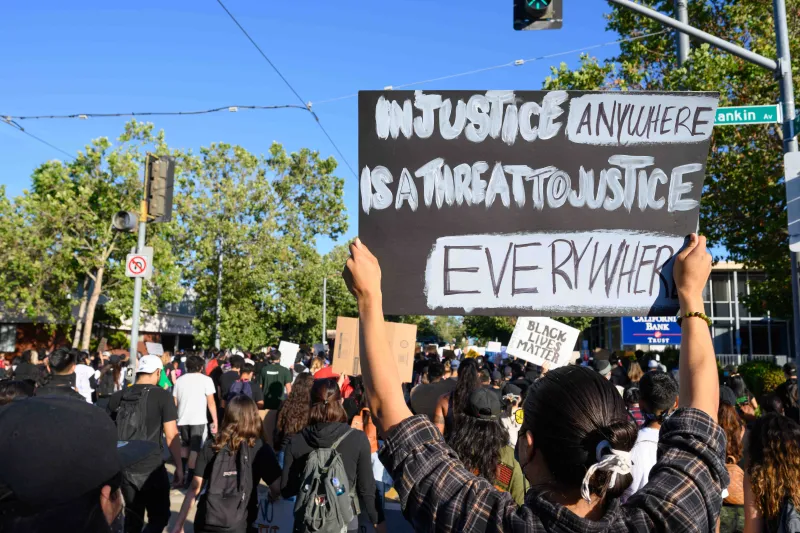Protest chants and police sirens reverberated around the apartment of New York University postdoctoral fellow Michael Rizzo as he and Stanford psychology assistant professor Steven O. Roberts released their pre-print study “The Psychology of American Racism” on June 1.
In their research, Roberts and Rizzo coined the terms “reactive anti-racism” and “proactive anti-racism” to characterize the recent movements sparked by the killing of George Floyd.
The scholars discerned seven factors that prompt racism — categories, factions, segregation, hierarchy, power, media and passivism — in a study published in American Psychologist on June 9, and summarized in The Daily’s Research Roundup on June 15. The researchers aimed to synthesize the vast array of already published research and present it in a more accessible fashion.
At the end of the paper, they contributed the two terms as a call to action for combatting the systematic oppression deeply rooted in our country.
“We’re seeing a lot of reactive anti-racists taking the streets because of these horrific events,” Roberts said. “We hope that that would translate to more proactive anti-racist policies. For instance, NASCAR recently banned the Confederate flag. It’s in part reactive and proactive, but they’re putting an actual policy in place to change society going forward.”
The researchers believe that these recent events have been a powerful start to catalyzing meaningful change through structural reforms.
“The Black Lives Matter protests have been an incredible source of inspiration and optimism in a time when our country needs it most,” Rizzo said. “Of course, the reason for the protests — police brutality and the systemic racism that permeates every corner of America — is heartbreaking, but I think it’s important to center the voices of the people who are bringing about real societal change in a way that is only rarely seen throughout history.”
Of the seven factors identified in their paper, the scholars agreed that “power” and “passivism” are currently the most salient.
“A lot of people — though still far too few — are rejecting passivism and pushing for anti-racist change. But at the same time, it’s really troubling to see how people in power continue to flex that power with increasing violence,” Rizzo said.
Debunking the misconceptions of racism, Roberts said, is a critical first step in understanding the problem.
“When people typically think of racism, they think of a few bad apples,” Roberts said. “When people look at the George Floyd case, they’ll look at that individual police officer as a racist person.”
Roberts hopes this research helps others understand that racism is about a broader system that affects individuals.
“What’s more important these days is for pupils to seize or to spend less time focusing on the issues that divide us, and more time on the issues that unite us, irrespective of our identity, and collectively challenge this unfortunate system,” Roberts said.
In addition, Rizzo said that education is the cause and solution of any given problem.
“My hope is that our essay will reach people from across the country and help them to understand how racism festers and persists in America,” Rizzo said. “With this knowledge, I hope that people will continue to build on our work, and the excellent work of many others, to identify effective anti-racist actions, policies and educational curricula that can dismantle the racial hierarchy that plagues our country.
Currently, Roberts and Rizzo are conducting research on the development of racist mindsets in preschool students.
“We’re examining how racial attitudes emerge and develop during childhood with a sample of children living across the United States,” Rizzo said.
In doing so, the researchers hope to promote anti-racism at the root.
“We start off as infants noticing race, and build meaning into those racial groupings during childhood,” Rizzo said. “In adolescence, we gain a deeper understanding of how race functions in society. And adolescents and young adults who are aware of racial injustice become more inclined to do something about it.”
Roberts and Rizzo end the paper by posing several questions to allow readers to reflect on the steps one can take to perpetuate the conversation and take action.
“How can individuals and collectives, both advantaged and disadvantaged, be mobilized toward anti-racism in their everyday lives?,” the researchers ask in their paper. “How can we promote anti-racism in young children, and how can we ensure that they remain anti-racist across development?”
Through their research, the scholars hope to see a world of individuals embedded with a psychology of anti-racism.
“Continue to listen to, and learn from, the incredible community leaders that are guiding our country through this transformative time,” Rizzo said. “Think hard about how you can build on their efforts and work with your peers to identify the meaningful actions that you can take right now to create change.”
Contact Andy Wang at andy612.wang ‘at’ gmail.com and Myra Xu at dmyraxu ‘at’ gmail.com.
